CARspec had the unique opportunity to repair the suspension on a high mileage Lexus LX470. The owner complained of crashing over bumps and unruly steering. The cause was surprising:
The left front height control shock had rusted through and broken loose. This shock design is unique to the LX470’s height control system: the vehicle pumps pressurized fluid into and out of the shock to raise or lower the vehicle. Because the shock had broken off (luckily not damaging a nearby brake line or tire), all of the height control fluid had bled out and the car’s entire front suspension collapsed.
The Lexus active height control system is fantastic when it works and hellishly expensive to repair when it doesn’t. Contamination of the fluid can result in a 5-figure repair bill if all parts (shocks, pump, accumulators, pressure globes, etc.) require replacement. Due to the age and rust, CARspec recommended this LX470 owner remove the stock height control system and install a traditional Land Cruiser coil suspension.
The parts required are same-year Land Cruiser shocks, rear coil springs, and all the mounting hardware and cushions. In order to get the vehicle level, the front torsion bars need to be clocked 2 splines tighter, then adjusted to support the vehicle at the correct height (88-90cm in the front, 90-92cm in the rear):
This extra adjustment helps set the ride height correctly. While the torsion bar is a slightly weaker spring rate than the factory unit, proper adjustment after the repair results in a smooth ride. After installing the front shocks, the rear differential is lowered out of the vehicle to allow for the Land Cruiser springs to be installed. They differ side to side:
The part number for the driver’s side ends in -6A690, the passenger -6A680. Dropping the differential down can be tricky but managed more easily with a transmission jack and the truck on the lift:
The swaybar was disconnected from the rear end as well to help with clearance. Beware that dropping the differential down too far will rip the brake and speed sensor lines and harnesses apart. Removing the struts was a challenge unto itself – everything was completely rusted together, so (with the help of another technician) both struts were cut out of the car with a sawzall:
Once the shocks were out, all of the fluid lines were cut and the fluid drain out as best as possible. Removal of the entire height control system is cost prohibitive. CARspec lets the system drain out of the lines a much as possible but some fluid leakage is normal for a day or two. The rear, new Land Cruiser coils and moved into place, the rear shocks installed, and the vehicle’s torsion bars and alignment adjusted. The resulting parts:
This repair was a challenge we wouldn’t recommend most attempt on a rusty, high mileage LX470. Accessing the rear upper shock height control fittings is challenging (without drilling holes in the body). It is important to note that while this fixed the collapsed suspension the warning light remains lit.
As Eden Prairie and Chanhassen’s independent Toyota and Lexus repair specialist, this was a fun challenge for the two technicians that performed it. While most mechanics wouldn’t attempt this repair, CARspec is happy to offer it as a viable alternative to fixing the height control system. If you have questions about the repair or have height control issues on your LX470, give us a call and schedule an appointment today!

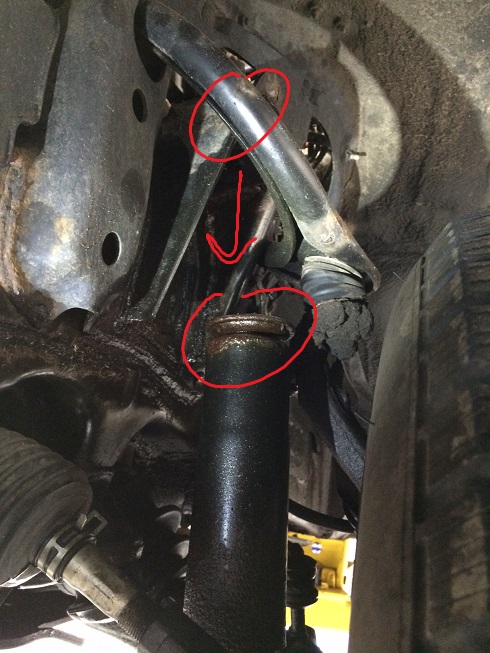
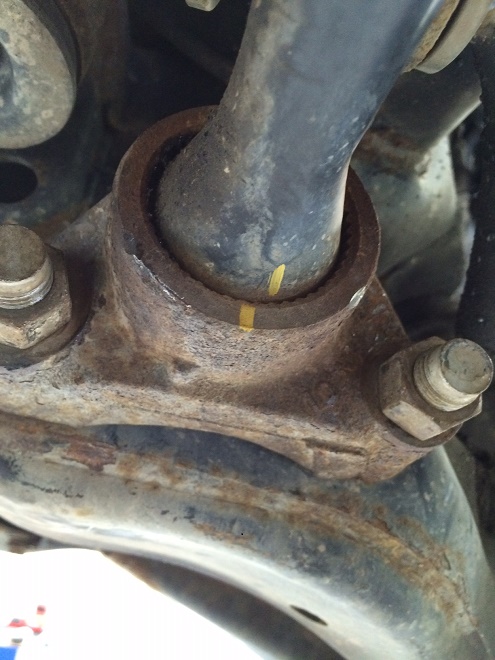
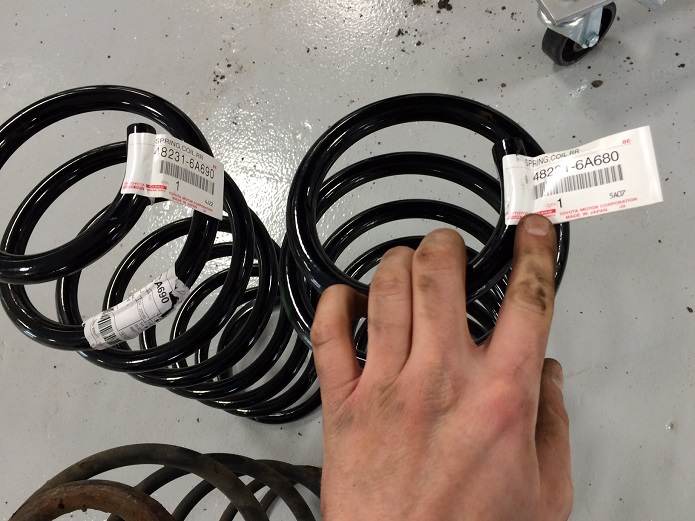
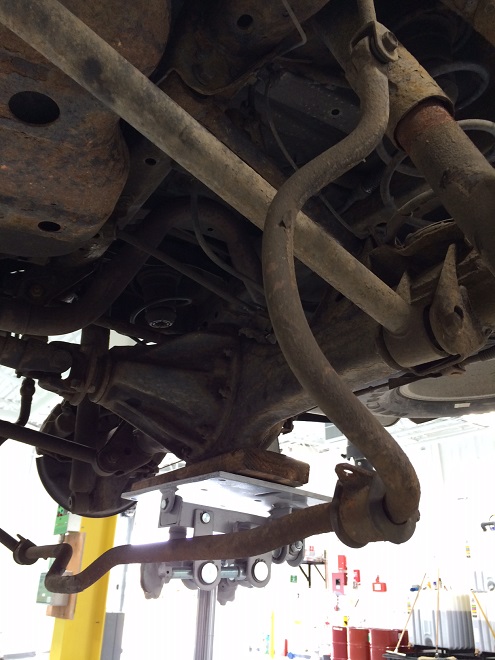
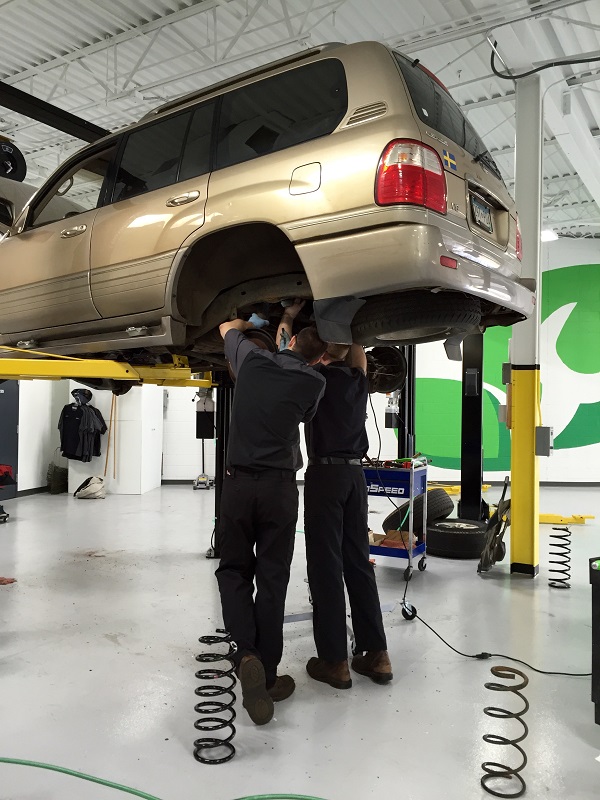

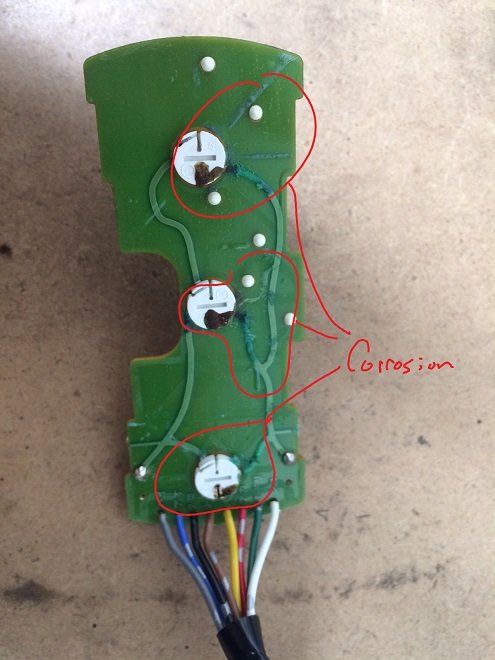
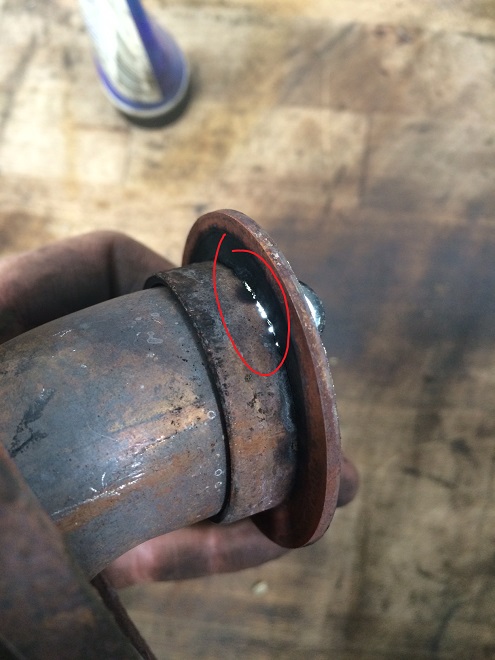
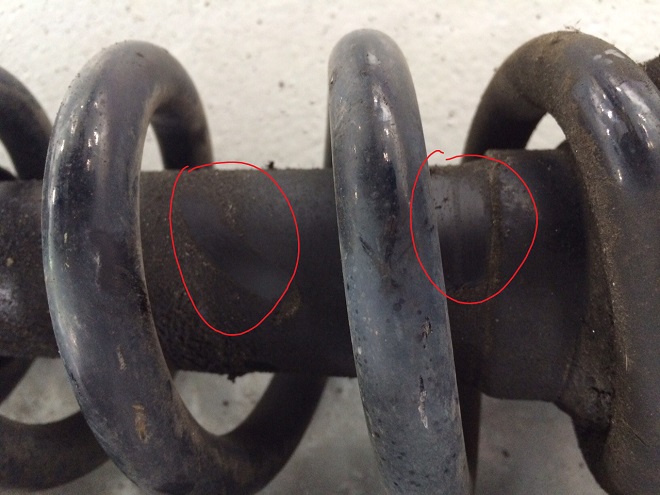
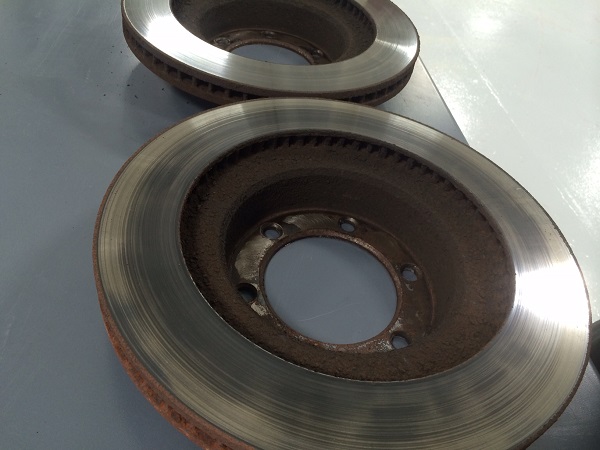
Nice job, much cheaper as replacing the AHC parts, true, but I personally would invest in a standard set of TB’s
But Toyota has a set of TB’s specifically for a 100 series which has NO factory AHC/fluid suspension, partnumbers 48161-60030 and the 48162-60030.
These are thicker in diameter, with a reason: in the old AHC system the car was lifted and held up by the 4 hydraulic struts, which btw everybody calls shocks, but they aren’t, and the AHC torsionbars were just supporting.
In the new situation the hydraulic strust/ jacks are gone and the complete weight in the front is now only held up by the same TB’s , which were only suitable in co-operation with the hydraulic struts/jacks.
As said, I would invest in some standard TB’s
Kind regards
George
PS the hydraulic parts are expensive, but if you look around in the world you will find plenty of addresses were these OEM parts are much cheaper, but true: more expensive as a standard set
George,
You hit the nail on the head when recommending torsion bar replacement in conjunction with this conversion – CARspec now does just that. Glad you found the post interesting enough to comment on!
John
Is there anyway you could list the OEM part numbers for the Mounting hardware ans Cusions for the land cruiser?
Also, will after market suspension and/or lift kits for 100 series land cruiser convert just the same? I have a 99 Lx470, AHC seems to be fine but planning ahead for thr inevitable.
Thanks!
Steven,
Calling your local Toyota dealership and asking for the specific components you want, for the same year Land Cruiser as your LX470, is the best bet for getting all the numbers you are looking for.
Aftermarket kits, as far as I am aware, do provide an alternative to buying the factory parts. CARspec only uses Toyota/Lexus genuine parts in our shop so I can’t comment on the over quality of aftermarket kits.
AHC failure that makes swapping out the system necessary is relatively rare. Usually it is rust that is the culprit – if you’ve got a truck that isn’t too rusty, don’t worry about it.
Good luck!
John